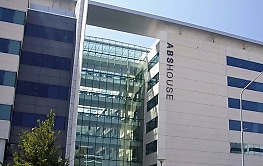
The unemployment rate remained steady in September at 4.1 per cent, which is in line with the revised figure for August, according to the ABS.
In the figures released this morning (17 October), the Australian Bureau of Statistics (ABS) reported that the unemployment rate for September has remained at a steady rate, residing at 4.1 per cent.
Bjorn Jarvis, head of labour statistics at ABS, said: “With employment rising by around 64,000 people and the number of unemployed falling around 9,000, the unemployment rate remained at 4.1 per cent, where it has generally been over the past six months.”
According to the data, a strong rise in employment participation has resulted in an increase rate rise of 0.1 percentage point, leading to a record high of 67.2 per cent.
“Employment has risen by 3.1 per cent in the past year, growing faster than the civilian population growth of 2.5 per cent. This has contributed to the increase in the employment-to-population ratio by 0.1 percentage point, and 0.4 percentage points over the past year, to a new historical high of 64.4 per cent.
“The record employment-to-population ratio and participation rate shows that there are still large numbers of people entering the labour force and finding work in a range of industries, as job vacancies continue to remain above pre-pandemic levels,” said Jarvis.
Despite a slight decrease in the figures pertaining to the number of unemployed people in the September period, compared to the previous year, the figures have risen by around 90,000 people.
“While the number of unemployed people fell slightly to 616,000 in September, overall, the number of unemployed people has risen by around 90,000 people since September 2023. Despite this rise over the last year, there are still around 93,000 fewer unemployed people than there were just before the start of the COVID-19 pandemic, when the unemployment rate was at 5.2 per cent,” said Jarvis.
In terms of underemployment, the rate fell by 0.1 percentage point to 6.3 per cent, just 1 percentage point lower than in September 2023 and 2.4 percentage points lower than in March.
“The trend employment and participation measures are at an all-time high, while unemployment and underemployment measures are still low, especially compared with what we saw before the pandemic. This suggests the labour market continues to be relatively tight,” said Jarvis.
The data pertaining to the growth in monthly hours worked rose by 0.3 per cent, with this growth being higher for males, up by 0.7 per cent, while women fell 0.3 per cent. According to the ABS, this was supported by male employment growing by 0.6 per cent, around double the 0.3 per cent increase in female employment.
On the data, Charles Ferguson, general manager of APMEA at G-P, shared that despite the seemingly robust job market, employers are facing mounting challenges across the board.
“Australia’s labour force participation rate has been steadily climbing since 2022, and the latest data from the Australian Bureau of Statistics (ABS) shows it has hit an all-time high of 67.2 per cent. Coupled with a low unemployment rate at 4.1 per cent, this points to a robust job market – a positive sign for local employees,” Ferguson said.
“Employers, on the other hand, face mounting challenges when hunting for talent in this tight labour market. New research from G-P found that 83 per cent of Australian executives find it difficult to hire skilled talent in their existing markets, up from 75 per cent last year.”
Ferguson also touched on the increase in the number of monthly hours worked and how it intertwined with the cost-of-living crisis that is affecting many Australian workers.
“The number of monthly hours worked also rose, indicating that individuals are working longer hours. This could be attributed to cost-of-living increases driving people to work extended hours to supplement their income,” Ferguson said.
“This shift towards greater salaries and enhanced benefits is also reflected in hiring strategies, with more than half (52 per cent) of employers considering increasing salaries and employee benefits to remain attractive to job seekers.”
Kace O'Neill
Kace O'Neill is a Graduate Journalist for HR Leader. Kace studied Media Communications and Maori studies at the University of Otago, he has a passion for sports and storytelling.










